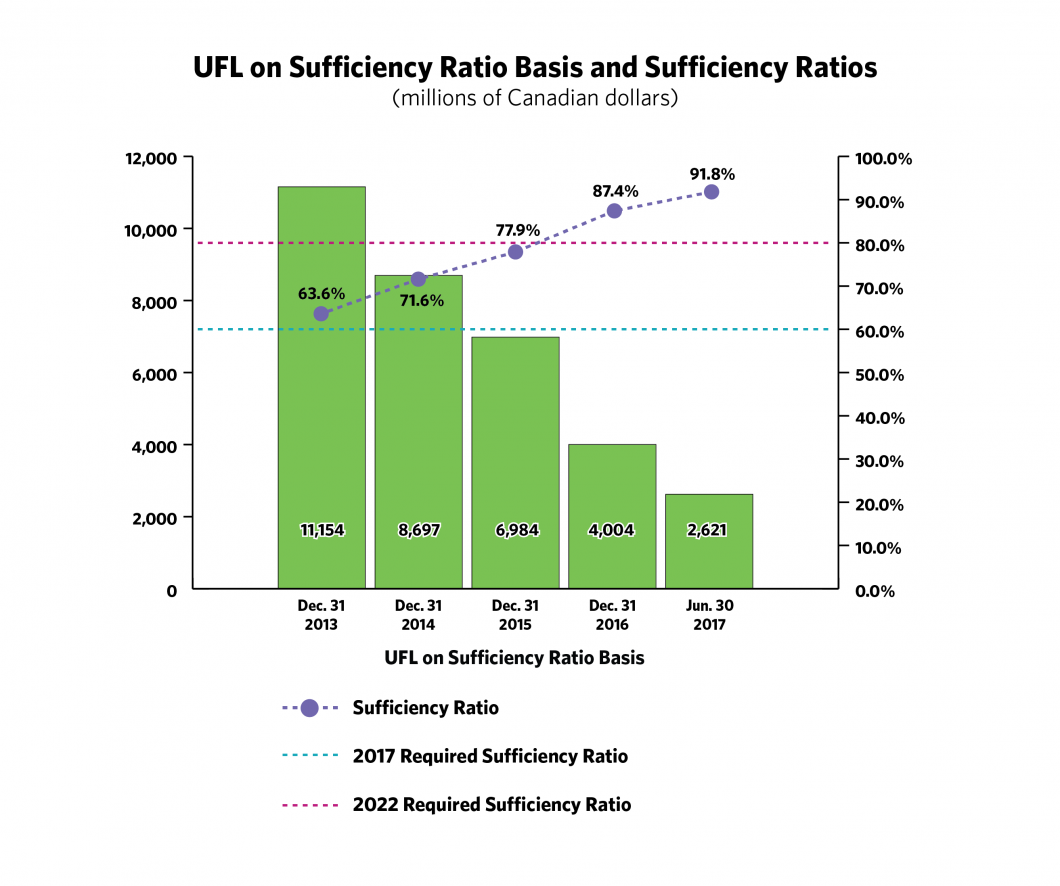For over 100 years, the Workplace Safety and Insurance Board has supported people who have been injured at work, and their families. It’s a responsibility we take very seriously. To ensure we can continue to provide this support to those we serve, we are making significant strides in reducing our unfunded liability (UFL). We measure this through a Sufficiency Ratio, which is an objective measure to track our progress toward sustainable funding.
In the second quarter of 2017, the Sufficiency Ratio increased to 91.8 per cent (from 87.4 per cent as of December 31, 2016). The increase is primarily due to employer premiums used to reduce the deficit and better than expected investment returns.
This translates to a UFL of $2.6 billion on a Sufficiency Ratio basis for Q2, a reduction compared to a high of $14.2 billion in 2011.
We have done this while offering premium rate reductions to employers and implementing legislated benefit increases for those injured at work.
We are continuing our efforts to reach 100 per cent funding and then to maintain a margin of prudence in the range of 115 and 125 per cent to ensure that we can withstand any future economic challenges without creating another UFL.
We are currently in a position to eliminate the UFL well ahead of legislated timelines as depicted below.

To learn more please read the 2017 Q2 Sufficiency Report (PDF).
